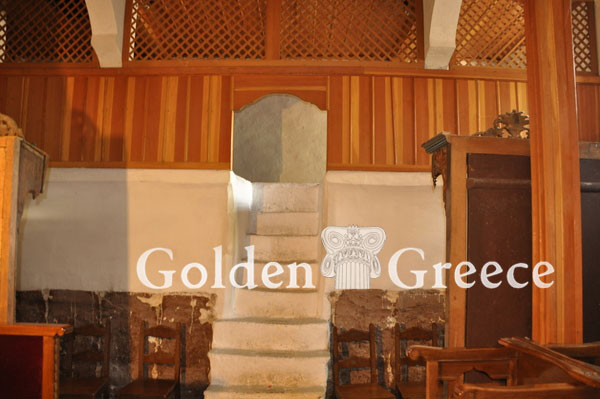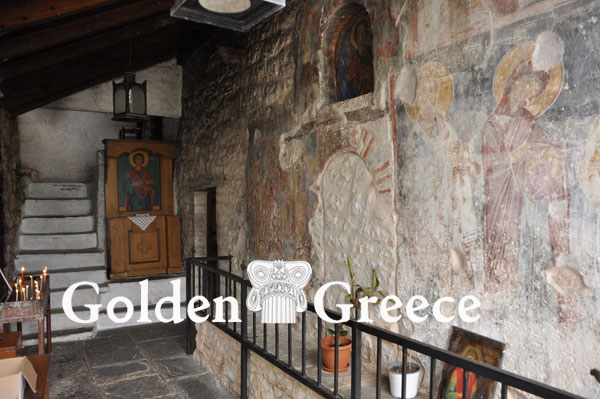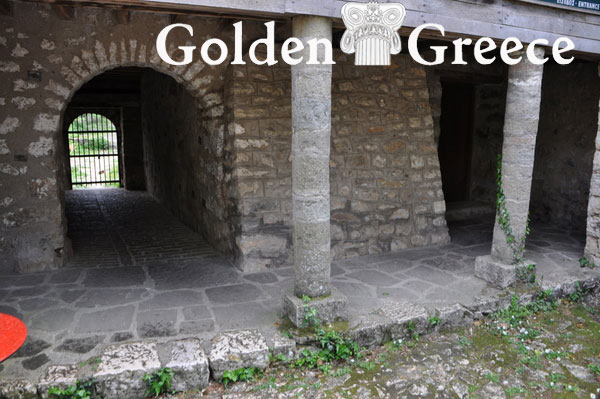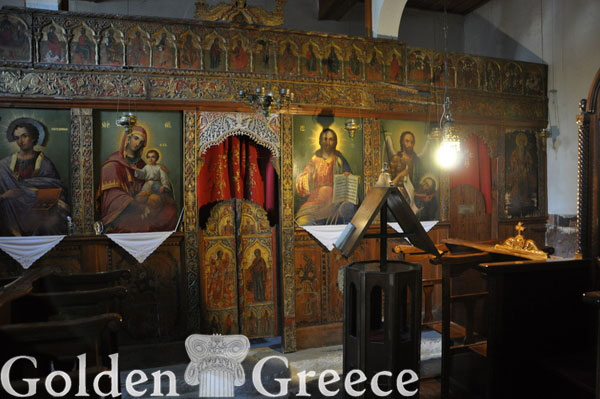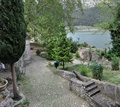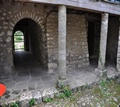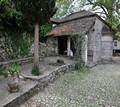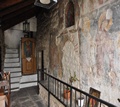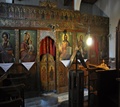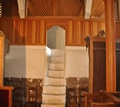
It is located on the island of Lake Pamvotida and was founded in the 15th century. It is a historic preserved monument. The foundation of the monastery is placed before the beginning of the 16th century, as revealed by the autobiography of two local ascetics with aristocratic origins, Osios Nektarios and Theophanos of Apsarades. At the beginning of the 19th century the temple was destroyed twice by falling rocks from the neighboring hill. The temple was rebuilt after the second rockfall by Abbot Ananias.
The catholicon of the monastery belongs to this period, which belongs to the type of wooden-roofed three-aisled basilica with a raised narthex. with a wonderful wooden iconostasis and loggia outside. Parts from the older temple have been incorporated into the newer temple, such as the southern wall of the temple. On the outer surface of this wall, parts of frescoes were revealed, belonging to four different painting phases (15th, 16th, 17th, and 19th centuries).
On the contrary, no frescoes are preserved inside the church, except for some fragments of frescoes with non-pictorial decoration on the south wall. The restored cells of the monastery are preserved on the north and south sides of the catholicon. In the southern cells, the famous Ali Pasha of Ioannina was murdered in January 1822.
This is where the end of the life of Ali Pasha of Ioannina was written, when, besieged by the forces of Khursit Pasha and following the order of the Sultan, who characterized him as a firmanli, he fled here and in the end he was beheaded in 1822. In the middle cell where he was, he was shot by the underground and the bullet wounded him in the abdomen. You can even see the point where the bullet penetrated the floor. Kyra Vasiliki who was with him was expelled and lived until her death in Aetoliko Aetoloakarnania. Her tomb is preserved behind the sanctuary of the Temple of Taxiarchons Aitolikos.
Today, a museum of the pre-revolutionary period operates in these cells, while a collection of manuscripts and archetypes from the island's monasteries is kept in the north.
From the monastery, the catholicon, the renovated library building and three cells have been preserved, which today have been turned into a museum of the pre-revolutionary period (with a lot of textiles, jewelry, utensils, etc.). There are also many notable portable icons from the 15th to the 19th century that are kept in the Monastery.
Editor: Fotini Anastasopoulou